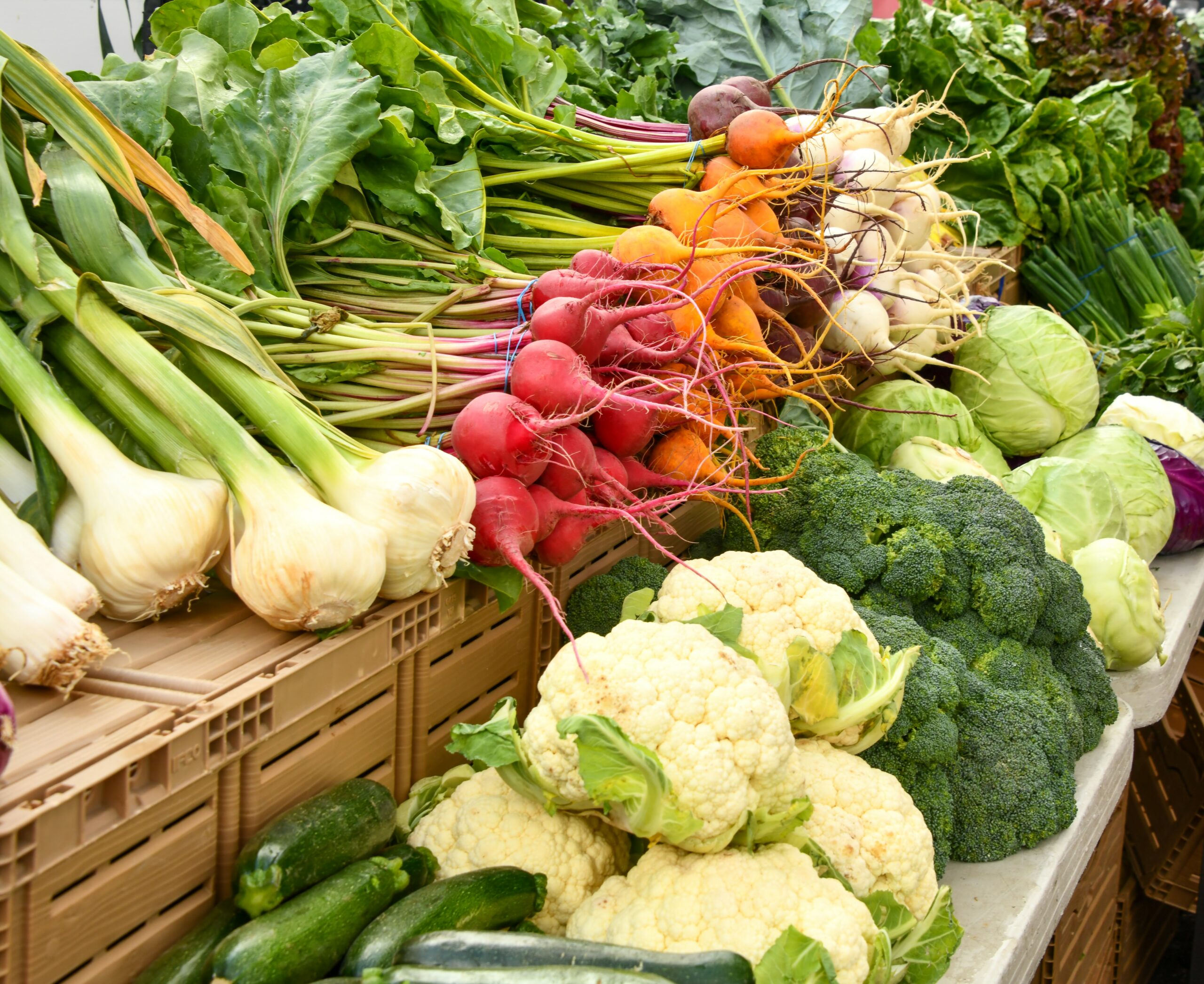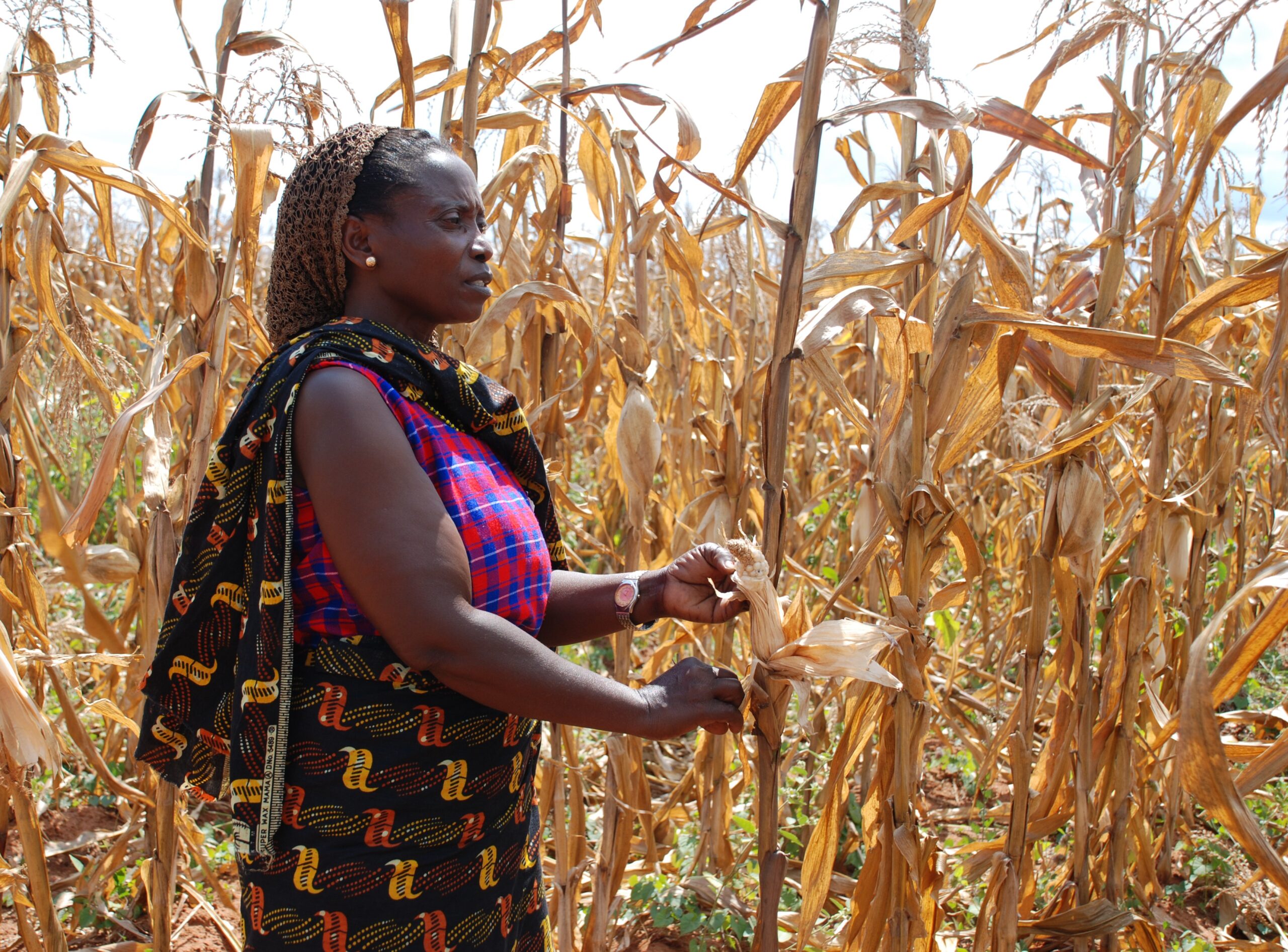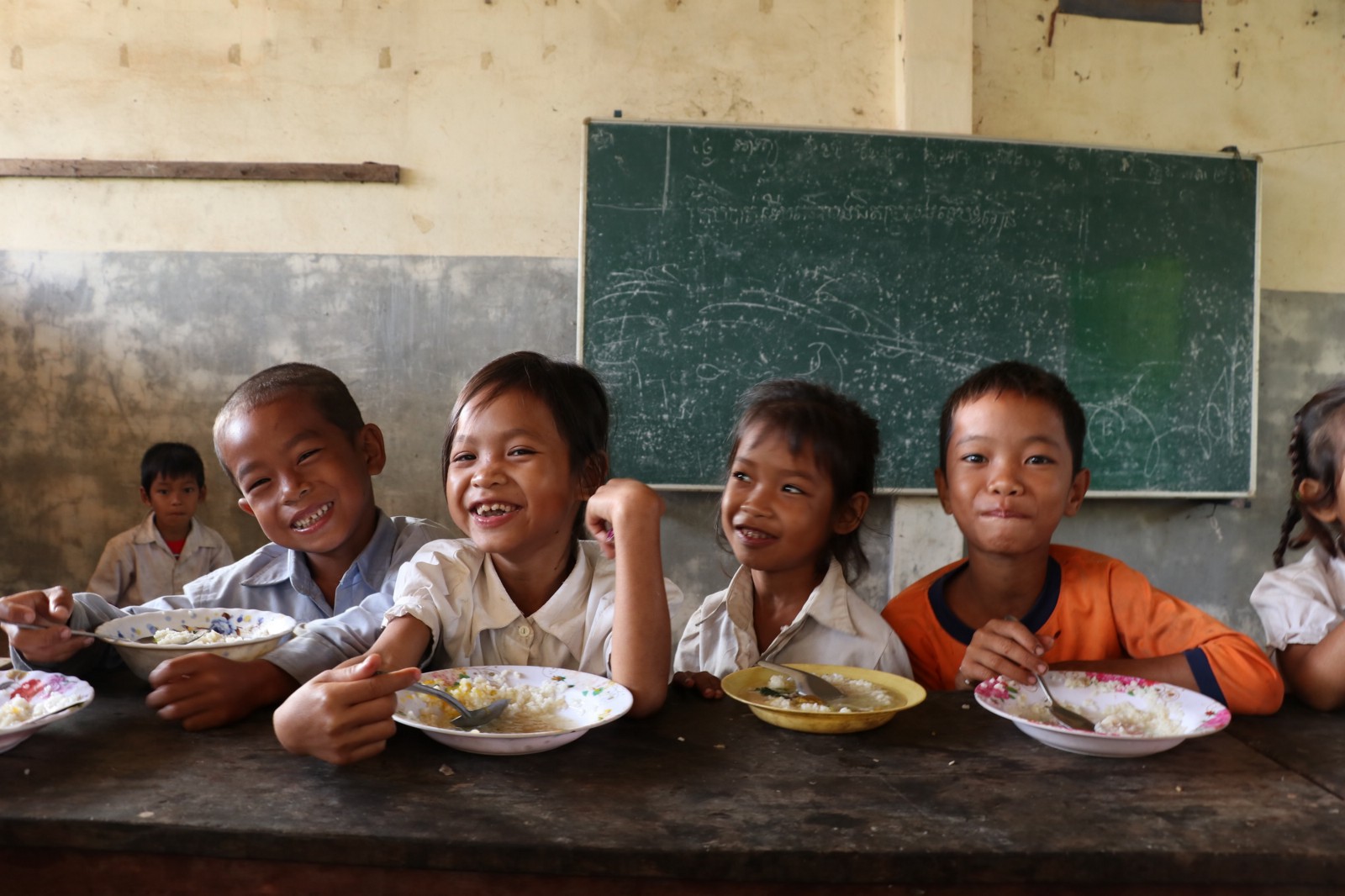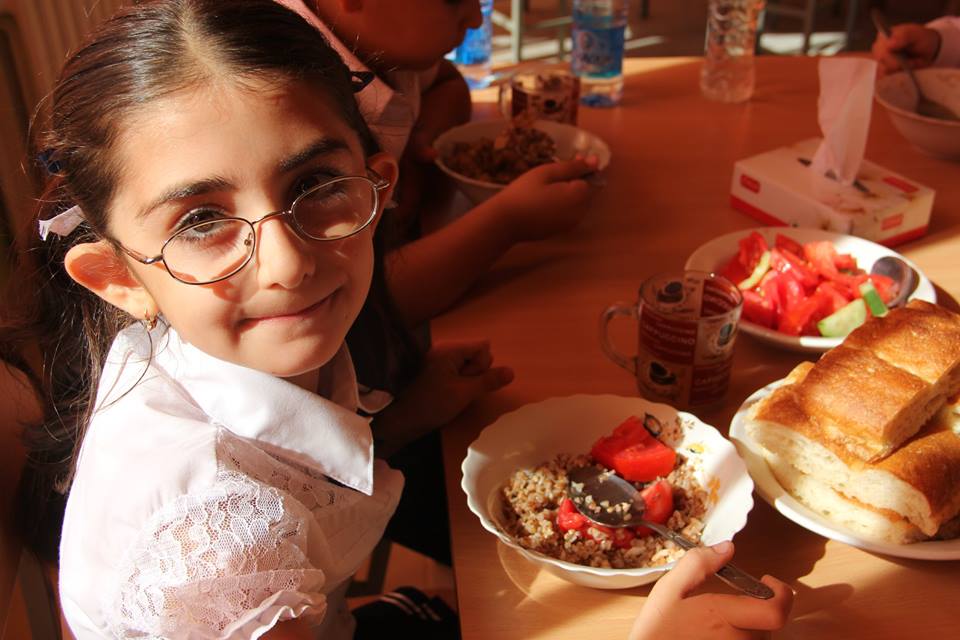While some countries have a single school meal program that addresses the needs of one identified population, in Lithuania, during the 2020-2021 school year, three different programs took place, reaching over 317,000 pre-, primary, and secondary school students.
Continue readingClimate-Smart School Meal Programs
Climate-Smart School Meal Programs
by Melissa Pradhan, Survey Associate: Asia, The Pacific, & The Middle East
The IPCC Reports have repeatedly called for alarms to reduce greenhouse gas (GHG) emissions in order to limit the increase of global average temperature to 2ºC, if not 1.5ºC. World class evidence and studies have indicated that failing to meet this target will result in catastrophic events with the potential to cause adverse cascading impacts on human life and the economy.
Emissions sourced from the Agriculture, Forest and Other Land Use sector alone have been noted to be just under a quarter of the total anthropogenic GHG emissions making up to approximately 10–12 Gigatonne of CO2eq per year (Smith, 2014). Mitigating GHG emissions from this sector, therefore, has the potential to deliver large-scale emission reduction.
In the 2020 academic year, 330.3 million students received school meal programs globally (GCNF, 2022). In the United States alone, the National School Lunch Program (NSLP) reaches millions of children every day. Nutrition Standards for the US NSLP shapes a USD 14 billion market and food service directors are obligated to adhere to the recommended nutrition standards. However, it was found that the current menus are not aligned with the latest nutritional science, and in addition have huge impacts on the environment. Researchers found that the NSLP menus incorporate the most carbon-intensive foods compared to the diet recommendations from the EAT-Lancet Commission’s healthy reference diet (Poole, 2020).
A study by Stern identified that the use of animal products in school lunches, mainly beef and dairy, was primarily the major driver of emissions (Stern, 2022). This is because beef hot dogs generate seven times more carbon than tofu and veggie stir-fry rice, for example. If all School districts opted for a reduced animal food menu, the US alone could minimize their carbon footprint by 700 million kg CO2eq that is equivalent to installing 99,000 residential solar panels or eliminating 150,000 cars from the roads for a year (Hamerschlag, 2017). In addition, reducing institutional purchase of factory-farmed meat can also strengthen local food systems.
Increasing evidence suggests that school meal programs can be made both healthier and climate-friendly at a low cost without having to compromise on meeting the recommended nutrition standards (Hamerschlag, 2017). As school districts have the liberty to design their own menu to meet the federal nutrition requirements, they hold the potential to influence dietary behaviors and the country’s agricultural landscape for years to come.

The Oakland Unified School District, for example, has already successfully implemented two initiatives – Oakland’s Lean and Green Wednesday Program, and California Thursdays through which they were able to successfully decrease their carbon footprint by 14% simply by reducing the frequency of meat, poultry and cheese in school lunches and opting for plant-based nutritious meals. The district also saved USD 42,000 by cutting costs by one percent per meal (Hamerschlag, 2017). In a similar manner, preliminary calculations suggest that the NSLP could also cut their cost from USD 3.81 per meal to nearly half if the EAT diet is incorporated into their menus.
Outside the United States, as a part of the National Climate Initiative, the German Federal Ministry for the Environment (BMU) has formed a joint project initiated and managed by the Institute for Future Studies and Technology Assessment (IZT) called Climate Efficient School Canteens (KEEKS). Through the project, 22 different ways to reduce GHGs have been analyzed and quantified through the “Measure-Map”. For example, the kitchen staff, chef and caterers are trained to prepare low-cost, healthy, sustainable meals, and utilize energy-saving appliances, plant-based ingredients and low-carbon meat alternatives. This way, KEEKS has significantly contributed to meet the German Government’s target of reducing 40% of the country’s GHG emissions by 2020 by training over 12,500 kitchen staff, reaching 23,000 students across Germany, and offering 140,000 students plant-based school lunches for a week.
Overall, to make school lunches more climate-friendly, some low-hanging fruits could be:
- Incorporating lunches that include more whole grains, seafood, nuts and seeds to meet the protein requirements.
- Reducing the frequency of serving beef and dairy and instead utilizing cheaper forms of protein such as legumes
- Switching to plant-centric meals and/or seafood
- Opting for energy-efficient kitchen appliances and behavior
In addition, local governments and nonprofits can also assist schools in building capacity to begin serving more sustainable lunches. The current policy requirements for school meals should also be updated to allow a wider variety of available climate-smart grain options. As more agricultural products are increasingly susceptible to the changing climate, expanding the options of food items on school menus can also ensure that we are climate-resilient and increase food security.
The world food system is not only driving climate change but also aiding increasing levels of diet-related diseases. It is imperative that we take initiatives to adopt sustainable diets and reduce carbon emissions wherever possible in order to safeguard human life. There are opportunities to opt for a lower carbon footprint for school meal programs through minor changes in our choices of items on the school menu, and the co-benefits in the form of reduced costs and increased nutrients in climate-friendly school meals can help us develop healthier lunches.
References
Global Child Nutrition Foundation (2022). School Meal Programs Around the World: Results from the 2021 Global Survey of School Meal Programs ©. Accessed at link.
Hamerschlag, K. & Polk, U.K., (2017). Shrinking the Carbon and Water Footprint of School Food: A Recipe for Combating Climate Change. Friends of the Earth. Accessed at link.
Poole, M.K., Musicus, A.A. & Kenney, E.L. (2020). Alignment of US School Lunches with the EAT-Lancet Healthy Reference Diet’s Standards for Planetary Health. Health Affairs V.39 N.12. https://doi.org/10.1377/hlthaff.2020.01102
Smith, P. et. al. (2014). Agriculture, Forestry and Other Land Use (AFOLU). In: Climate Change 2014: Mitigation of Climate Change. Cambridge University Press, Cambridge, United Kingdom and New York, NY, USA. Accessed at link.
Stern, A.L., Blackstone, N.T., Economos, C.D. et al. (2022). Less animal protein and more whole grain in US school lunches could greatly reduce environmental impacts. Nature: Commun Earth Environ 3, 138 (2022). https://doi.org/10.1038/s43247-022-00452-3
UNFCCC (2018). Climate-Efficient School Kitchens and Plant-Powered Pupils Germany. Accessed at link.
Discussing AUDA-NEPAD Home-Grown School Feeding Guidelines
Home-Grown School Feeding (HGSF) programs aim to provide school children with nutritious meals while also supporting local agriculture and economies. Since the program’s endorsement by the African Union Development Agency New Partnership for Africa’s Development (AUDA-NEPAD) in 2003, the HGSF concept has continued to attract significant attention due to its potential to simultaneously meet various cross-sectoral objectives.
Continue readingGCNF Celebrates International School Meals Day
Every year on March 9, school feeding leaders, government officials, and community members come together to celebrate International School Meals Day. This year, Global Child Nutrition Foundation is celebrating by sharing our top 5 favorite facts about the benefits of school meal programs found around the world.
Continue readingCelebrating International Women’s Day: Women and School Meal Programs
From the United States to Eswatini, and many, many places in between, women form the backbone of many school feeding programs across the globe.
Continue readingThe 2022 Forum Report is here!
It has been a few months since school meal programs last gathered together to discuss the current state and future of school feeding. We have done our best to capture the insights, highlights, and more from the 2022 Global Child Nutrition Forum held in Cotonou, Benin in this Forum Report. GCNF wishes our most sincere thanks to Catholic Relief Services for providing feedback and graphic design for the report.
Available in English and French, we hope readers who were not able to join us in Cotonou will be able to take away just as much information as those who participated in person. Opening and closing ceremonies, plenary sessions, breakout workshops, and school visits are accompanied by photos from the event and links to learn more. Head to the Global Child Nutrition Forum page to start reading!
In the meantime, please enjoy this excerpt from the report on the plenary session presented by the Government of Benin on the country’s National Integrated School Meal Program.
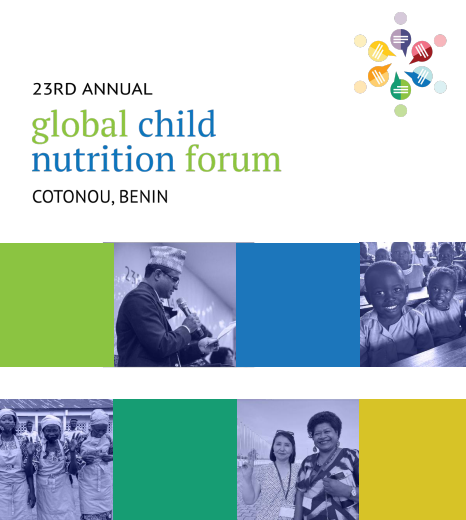
The National Integrated School Meal Program of Benin
In order to correct disparities across geography, gender, and other barriers to access, the Government of the Republic of Benin founded the National Integrated School Feeding Program, implemented through the Ministry of Preschool and Primary Education. Although other organizations operated programs in Benin in the past and the program is carried out in partnership with other organizations, the government is the primary funder of its national school feeding program.
Benin identified school feeding as an essential measure in combating the inequalities listed above in addition to fighting hunger and poverty. The school feeding program in Benin has three main principles – effective management and preparation of meals, purchasing local, and complementary activities. A comprehensive set of data collection measures follows the implementation of the program at various levels and in a variety of indicators. Access to drinkable water, access to rural areas during the rainy season, and low participation from some communities in school canteen activities are some of the challenges faced by Benin in carrying out the program. Benin participated in the pilot of the Global Survey of School Meal Programs and has continued to contribute its data to the global database.
What we learned
- The Government of Benin has set an ambitious goal of achieving a 100% coverage rate in their 7,500 schools by 2023
- Innovations from universities and research institutions have become more prevalent throughout the program
- Supplementary activities include deworming, following the nutritional status of students, medical care for students and cooks, and the promotion of sanitation and school hygiene
- There is a strong emphasis on bettering the productivity of small-scale farmers and the quality of their products to address the challenges currently faced in those areas.
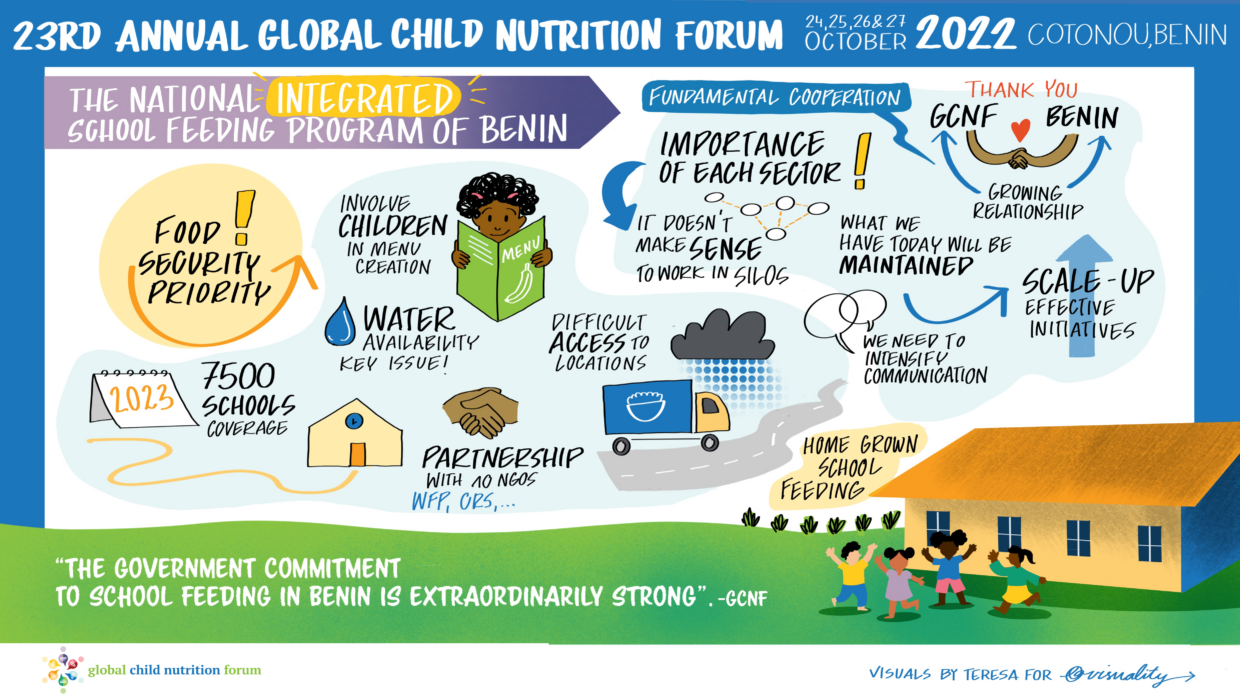
Country Spotlight: Saint Lucia
An island nation in the Eastern Caribbean, Saint Lucia is an outstanding example of government support for school meal programs.
Continue readingAnnouncing Host Country Open Call for 2023 Forum
The Global Child Nutrition Forum is a conference focused on school feeding programs. The four-day event features government exchanges, plenary sessions, technical workshops, and a day trip to see the local school meal programs in action.
We’re looking for our next host country for the 2023 edition of the Global Child Nutrition Forum. Help us bring together school meal program leaders from across the globe, and share your school meal program with the world.
Host Country Frequently Asked Questions
What is the Global Child Nutrition Forum? The Global Child Nutrition Forum is a conference focused on school feeding programs. The four-day event features government exchanges, plenary sessions, technical workshops, and a day trip to see the local school meal programs in action.
Who is the audience? Each year we expect 300-400 participants from all over the world. Government representatives make up the core of the Forum audience. Normally, 35 to 60 countries send formal government delegations. The Forum attracts additional attendance from development partners, UN agencies, academia, and the private sector.
Where will the 2023 Global Child Nutrition Forum be held? The Forum is held in a different country each year. GCNF is currently seeking a host country for 2023. In the past, the Forum has been hosted in Armenia, Benin, Brazil, Cabo Verde, Cambodia, Canada, Ethiopia, Ghana, Kenya, South Africa, Tunisia, and the United States.
When will the 2023 Global Child Nutrition Forum be held? GCNF and the host country will work together to select the exact timing. GCNF anticipates the Forum will be held in October, November, or December of 2023.
What are the benefits to the host country? The Global Child Nutrition Forum offers an opportunity for a country to co-host a well-known international event and showcase their school feeding program(s). It brings tourist resources to the region and garners international attention.
What is GCNF looking for in a host country? Safety first. The host country must be safe for guests from all areas of the world to gather. Second, we seek a host country that with a compelling, strong school feeding program y of global recognition. Alternatively, countries that have a new commitment to roll out or expand their program are also attractive Forum hosts. The host country must have an easily accessible international airport, safe in-country transportation, and a modern and large enough venue space to accommodate 300 to 400 guests. The visa process must be easy and accessible for all guests.
What is the role of the host government? The role of the host government is negotiated each year. Primary responsibilities include ensuring the safety and security of the event, ensuring easy visa processing, presenting a session on the country’s school feeding program, and organizing site visits to schools. The cost of the Forum is shared between GCNF, the host government, and complementary partners. While exact amounts are to be negotiated, the host government should be prepared to make substantial cash or in-kind contributions. The government will be asked to assign an English-speaking focal point to work with GCNF for the planning and organization of the Forum.
How do we express our interest in hosting the Forum? Please express your initial interest in hosting the Forum as soon as possible by emailing info@gcnf.org. Additional information will be provided.
What if I am not from the government, but I am involved with school feeding and want my country to host the Forum? The government is a key host of the Forum. We encourage interested parties to reach out to their government to gain their support for hosting the Forum. Interest in hosting the Forum can come from a partner, but it must accompany support from the government.
What if I represent an organization who wants to partner with GCNF on the Forum? Fantastic! Please reach out to info@gcnf.org with your interest.
Think Your Country Would Be the Perfect Fit?
Please express your initial interest in hosting the Forum as soon as possible by emailing info@gcnf.org. Additional information will be provided.
The 23rd Annual Global Child Nutrition Forum
The 23rd Annual Global Child Nutrition Forum brought together 244 school feeding leaders from around the world for discussion, exchange, and peer-to-peer support essential to the future of school meal programs. Returning to an in-person format for the first time since 2019, Forum participants investigated school meal program linkages between health, nutrition, and agriculture, and dove deep into the effects of compounding crises. They recognized the importance of program sustainability and resilience for the future in the 2022 Forum Communiqué, a call to action produced by the participants. The 2022 Forum Communiqué is available on GCNF’s website in Arabic, English, French, Portuguese, Spanish, and Russian.
The Forum was a joint collaboration of the Global Child Nutrition Foundation (GCNF), the government of the Republic of Benin, Catholic Relief Services, and the UN World Food Programme. Chosen as the host government for the event for its impressive National Integrated School Feeding Program and President Talon’s national budget commitment to school feeding, GCNF hopes other countries will learn from the Republic of Benin’s successful experience. As a member state of the School Meals Coalition, Benin’s hosting of the Forum attests to the country’s commitment to excellence in school feeding. GNCF expresses gratitude to the government and people of Benin for serving as this year’s host and looks forward to continuing their invaluable relationship for many years to come
The Forum kicked off with an Opening Ceremony featuring messages from leaders of GCNF, the government of the Republic of Benin, Catholic Relief Services, and the UN World Food Programme. Throughout the week, participants took part in plenary sessions on exciting topics like “The Triple Burden of Malnutrition” and “Sustainability and Resilience in School Meal Programs”. The Forum offered 9 workshops for participants to gather in small groups and learn more about country-specific experiences. This year, workshop topics covered climate-smart agricultural techniques, engaging private-sector partners, the role of gender in program implementation, and more.
Every year, visits to local schools delight and inspire Forum participants and this year was no exception. Participants split up to visit 6 different local schools, being greeted by students, teachers, and local community members to tour kitchens, pantries, school gardens, canteens, and classrooms. As a result of these visits, paired with an engaging debrief and plenaries throughout the week, participants left the 2022 Forum with new knowledge and professional connections to support their school feeding work. A celebration of the 20th anniversary of the McGovern-Dole Food for Education Program preceded the Closing Ceremony which officially closed the Forum. Participants then enjoyed a cultural animation from the government of Benin, including dinner, cultural performances, and dancing at the Palais des Congrès. GCNF celebrates a successful 23rd Annual Global Child Nutrition Forum and many more to come!
School Meal Programs in Action Around the World
School meal and school feeding programs look different across countries around the world. A new report from GCNF illustrates how.
Continue reading
